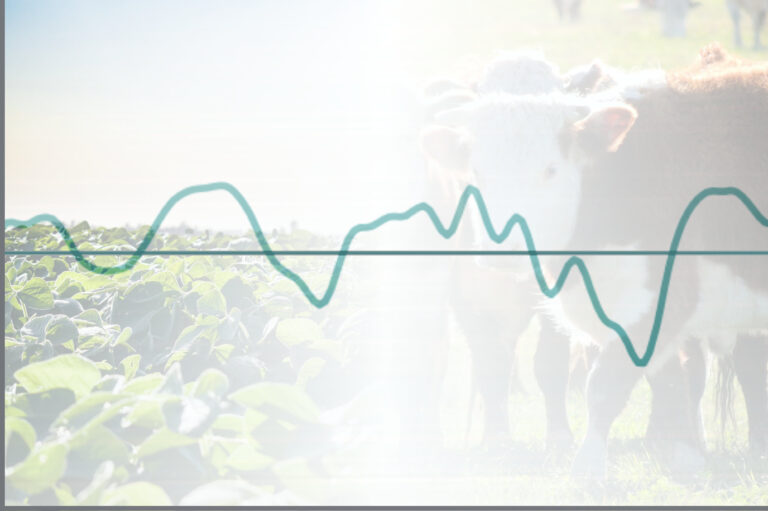Since the beginning of the 21st century and up to 15 years later, as a result of the powerful expansion of consumer market demand in China, the table of universal exports, always headed by manufactures, oil, minerals, metals and automobiles, among others, was skewed with a tendency towards strong competitiveness of primary goods of plant and animal origin. Especially since 2003.
Thus, while crude and refined petroleum, minerals, vehicles and their parts, computers and hardware, and other manufacturing goods were preferred, cereals, oilseeds and derivatives -whose vedette is soybeans - were challenging.
In an estimated calculation based on annual trade values of products exported by all the countries of the world, if we compare the total value of placements as of 2022 with respect to 2005 and 2021, the main ones are commodities (soybeans, wheat, corn, plus beef, pork and poultry are sampled) gained positions in the world ranking.
Madame Soja
Soybean, as vedette, badly or well is always notorious, and leads, or is in the peloton of favorites among the other primary products. In the decade between 2005 and 2015 the oilseed had an increase of 212% in its commercial value.
Placed in the universal contest, and compared to the rest of the goods exported globally in 2005, in 2021 the oilseed was in the stellar number two position.
In 2021, primary sales were among the highest in the global ranking. Soybean, corn, wheat, and poultry, beef and pork had the first 25 places in the world total of exported products. Soybean, in the number 2 position, after iron ore and one ahead of copper and crude oil; soybean meal, number 6; corn, 7; frozen beef, 8; sugar, 10; soybean oil, 11; poultry meat, 12; coffee, 15; fish fillets, 21; pork, 23; wheat, 24; beef, number 26, among others.
In 2021, among the top 30 countries with exports of plant products, eight were Latin American: Brazil, Argentina, Mexico, Chile, Peru, Colombia, Ecuador and Paraguay.
But in 2022, soybeans dropped from second place in the previous year to 98th place, with the Chinese consumer slowdown undermining its sustainability.
On the other hand, wheat, corn and beef, pork and poultry in 2022, compared to 2005 and 2021, had a favorable balance.
In 2022, soybeans, corn and wheat occupied the top three spots on the global agricultural export slate by traded value.
Frozen beef, seventh place. Fresh or refrigerated beef, 17th. Frozen pork, 25th place. Cut poultry, 20th. It was not the same in 2003, when they had a strong worldwide drop.
Latin America takes care of its granary
Beyond the ups and downs and the global economic situations, the five countries -four of them from Mercosur- that had the highest volume of soybean exports by commercial value in the quarter century between 1995 and 2021 were the United States, Brazil, Argentina, Paraguay, and Uruguay.
For South Americans, oilseeds and grains continue to nourish their sensitive economies.
The trend in the export flow Latin American of all items, between 2019 and May 2023, highlights the placements of Argentina, with corn, soybean meal, soybean oil, delivery trucks, and wheat; from Brazil, iron ore, soybeans, crude oil, raw sugar, and poultry meat. Also Chile makes the list with copper, fish fillets, and iron ore; Mexico with cars, motor vehicle parts, computers, delivery trucks, and crude oil; Paraguay with soybeans, electricity, beef, and soybean meal; and Uruguay with beef, chemical wood sulfate, concentrated milk, and electricity.
Brazil champion, Chile runner-up 2023
Meanwhile, after pandemics, droughts, China and its internal retraction, exchange rates, tax pressure, political tensions and other tensions, the regional agro-export map has shifted. Not all of them have qualified for the next race.
Only two Latin Americans made the overall podium.
Brazil reaches the 11th position thanks to fuels, soybeans, corn, peanuts, beef and others.
Chile, 16th, with copper, fruits, fish and mollusks, among others.
Between January and May 2023, out of a total of more than 1040 products exported worldwide, the first countries to obtain higher trade values were China, the United States, Germany, Japan, South Korea, the United Kingdom, Spain, Turkey, India, Singapore, BrazilIreland, Saudi Arabia, Sweden, South Africa, Chileand Portugal.
According to the World Trade Organization (WTO) Barometer, "the commodity trade index (...) reached a value slightly below trend. Given the combination of strong positive and negative indicators, the short-term outlook is more uncertain than usual.".



